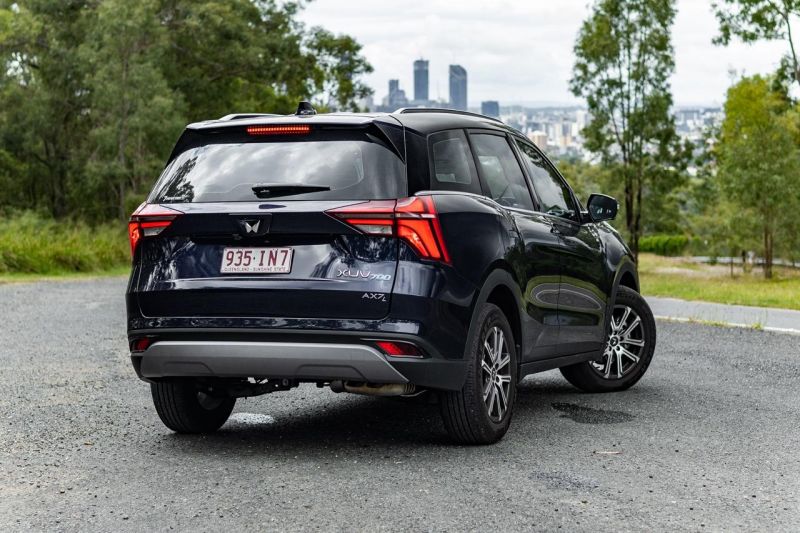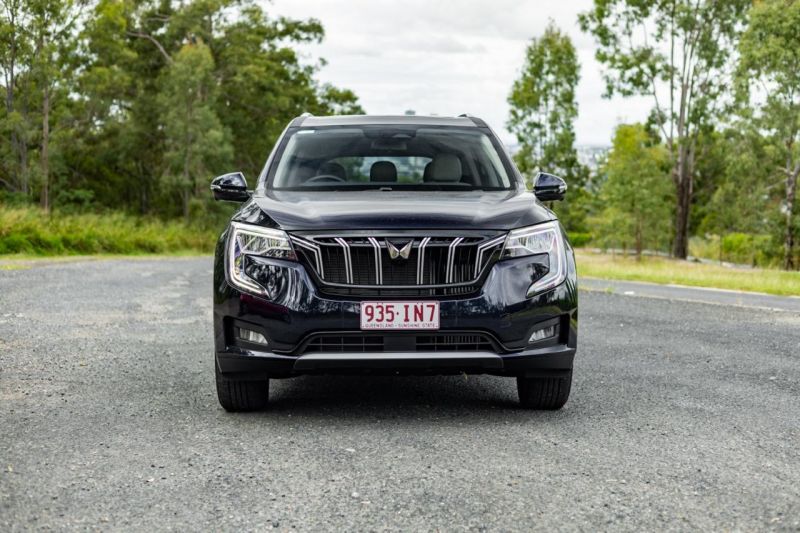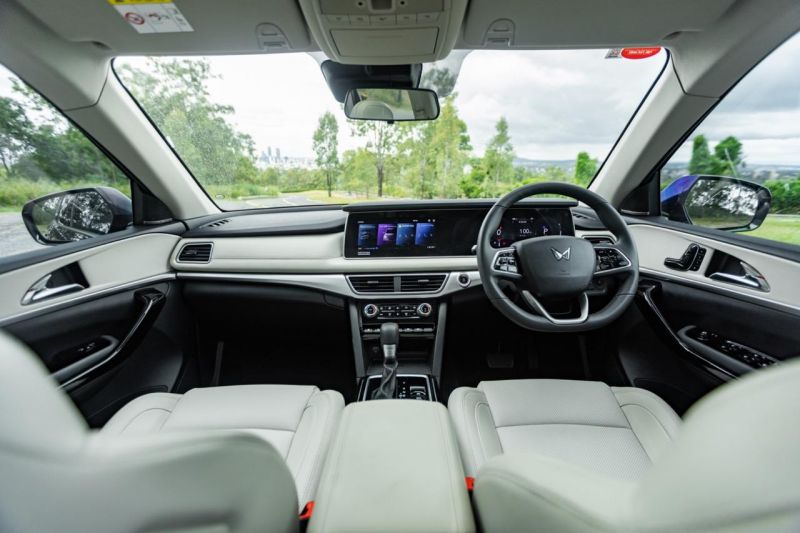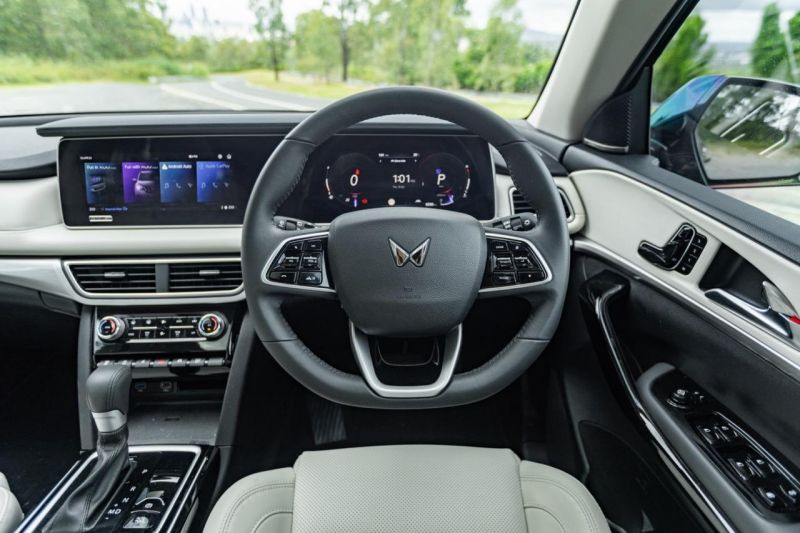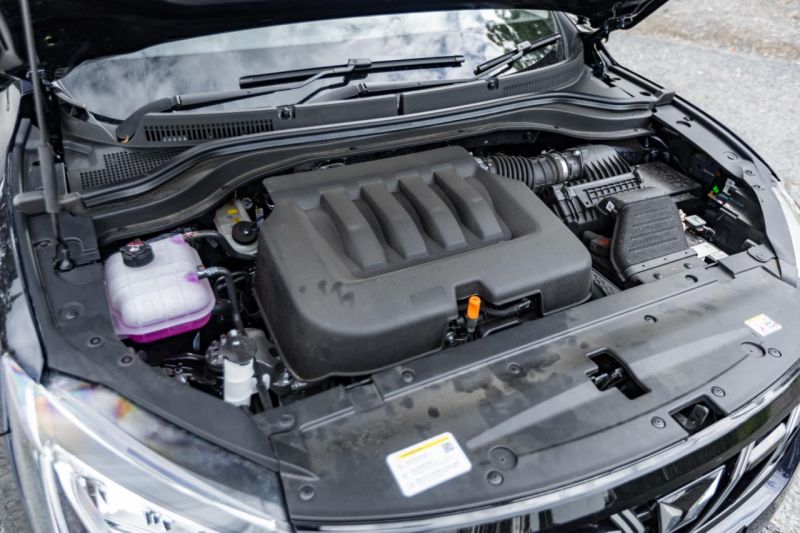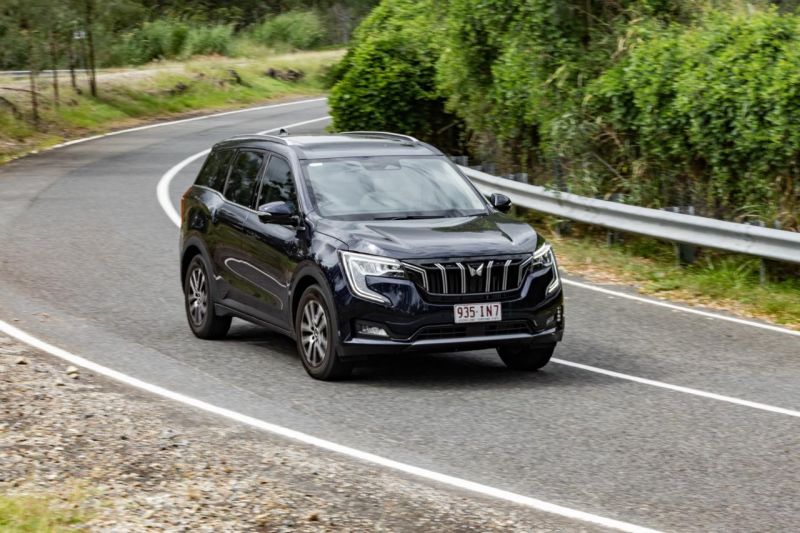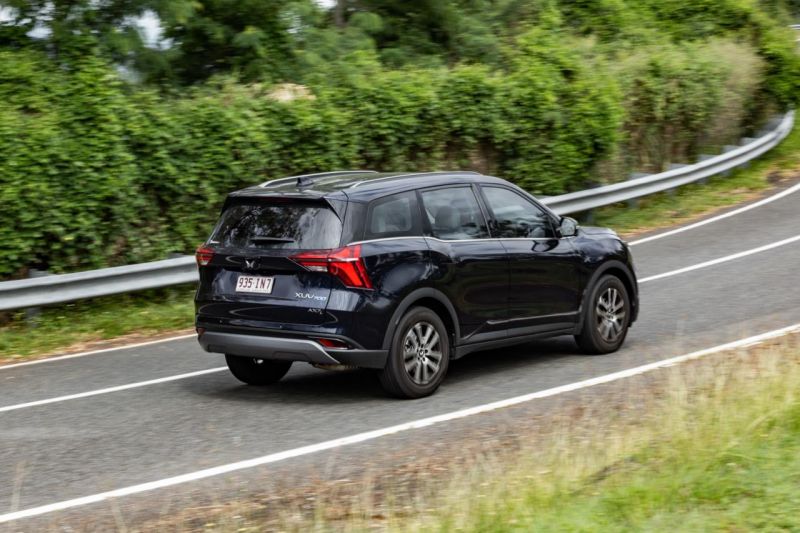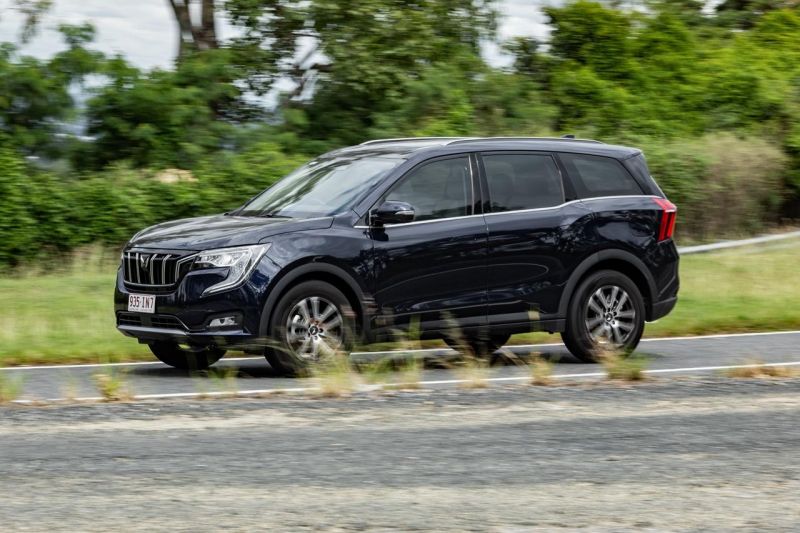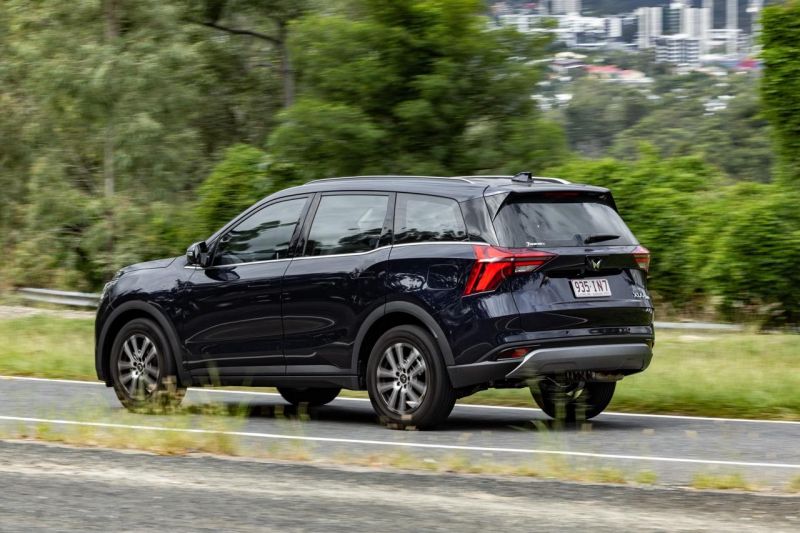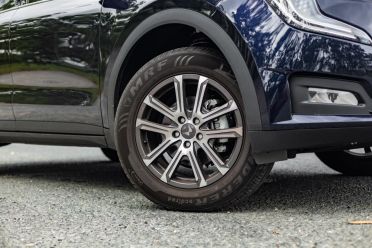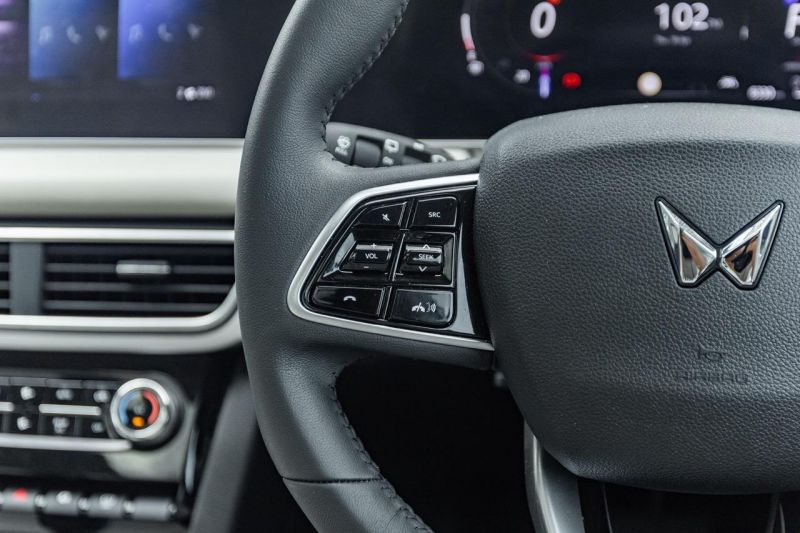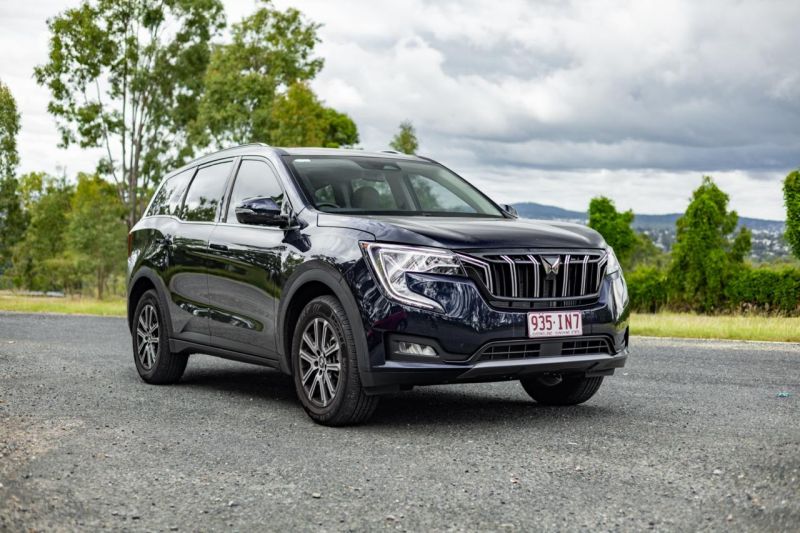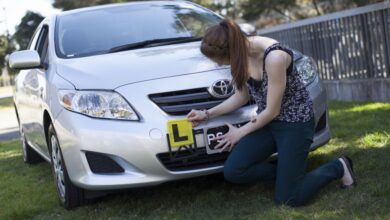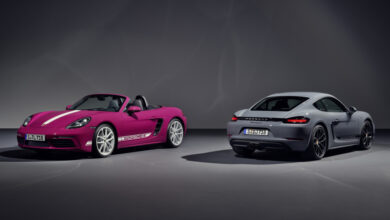2024 Mahindra XUV700 review | CarExpert
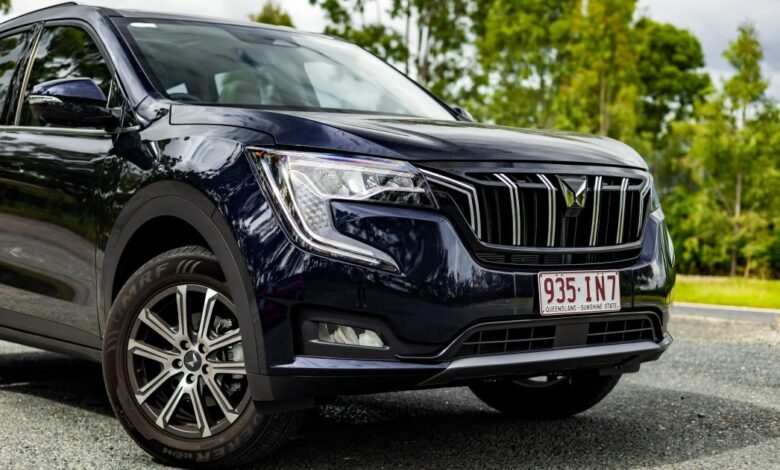
The Mahindra XUV700 would have to be one of, if not the most underrated SUV in Australia.
It’s by and large the best-equipped and best-priced seven-seater SUV in the country. Yet, while you may think its affordable price is reflected in a lack of features or poor fit and finish, it’s surprisingly well-equipped and well-built while presenting a stylish cabin that outshines many of its significantly more expensive competitors.
Before jumping in, we did not realise just how affordable the XUV700 was, and our first impression was that if ‘they can price it below $40,000, it’s a great thing’ – well, it’s priced from $35,990, and given that you can now spend more on a Toyota Yaris, it makes the XUV700 a bit of a bargain that many have not considered or are even aware of.
If you are looking for the cheapest seven-seater SUV in Australia, look no further.
From the outside the XUV700 is a relatively generic design; it tends to blend in and look the part in traffic and at school drop-off. You get a few glances from people that have not heard of the brand or have never seen the car before, but it’s not the sort of SUV that is over styled to make a point as some of the Chinese brands seem to be fond of doing.
The Indian brand has gone for an inoffensive design that should have a broad and mass appeal. While it arguably lacks some polish and sophistication in its similarity to other Mahindra models, it’s a good-looking thing.
There are some interesting exterior features, like the electric pop-out Tesla-esque door handles, or the Renault-like LED daytime running lights that give it some character. But otherwise, it looks as you would expect a seven-seater SUV to look.
The XUV700 is a replacement for the old 500, which started at under $30,000 but felt two generations behind the new 700 offering. The new seven-seater measures 4695mm long, 1890mm wide and 1755mm tall on a 2750mm wheelbase, making it a pretty easy car to get in and out of tight garages and underground carparks.
Unlike the more off-road-capable and rural-focused Mahindra Scorpio, the XUV700 is a front-wheel drive unibody SUV that is targetted at suburban buyers with three or more kids that need a reliable, safe and feature packed seven-seater. For those cross shopping, the XUV700 is best compared against the likes of the Mitsubishi Outlander.
How does the Mahindra XUV700 compare?
View a detailed breakdown of the Mahindra XUV700 against similarly sized vehicles.
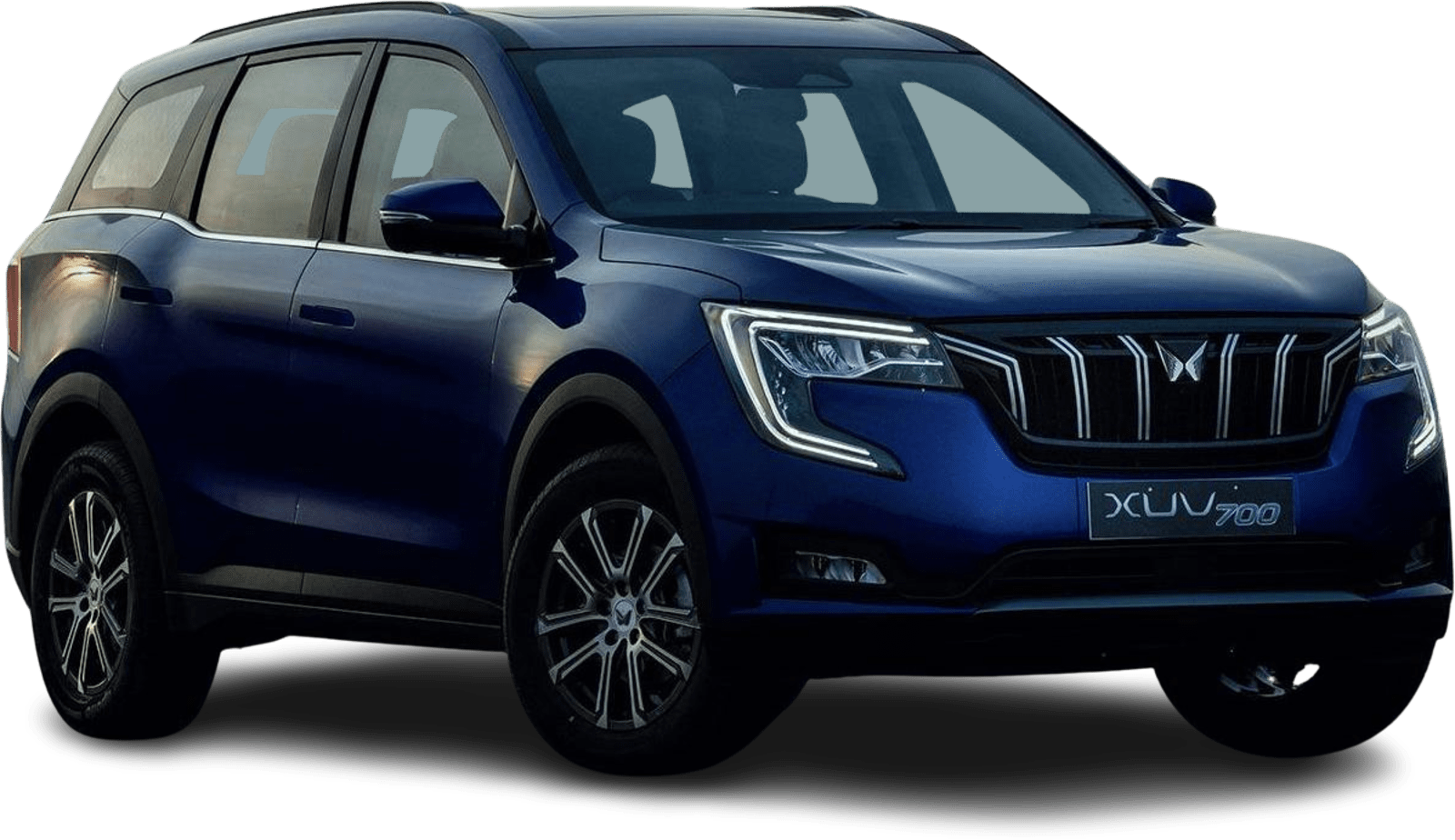
Mahindra
XUV700
How much does the Mahindra XUV700 cost?
Mahindra is taking $1000 off the price of 2023-plated versions of its seven-seat XUV700 SUV until the end of the financial year (June 30, 2024).
This means the entry-level XUV700 AX7 is now priced from $35,990 drive-away, and the flagship XUV700 AX7L is now priced from $38,990 drive-away. Prices for 2024-plated vehicles are an additional $1000.
That runout pricing sees it undercut even the most affordable seven-seat versions of key rivals, like the Mitsubishi Outlander LS ($39,490), Honda CR-V VTi 7 ($40,990 drive-away), Mazda CX-8 G25 Sport ($42,060) and Nissan X-Trail ST AWD ($39,790).
It also means that, for the time being, the XUV700 is the cheapest seven-seater in Australia. Even the Chinese LDV D90 opens at $38,990 drive-away, let alone the new Chery Tiggo 8 Pro Max ($41,990 D/A).
What is the Mahindra XUV700 like on the inside?
It’s very rare to find a car in this price range that offers an interior colour choice that’s anything but black.
With the XUV 700, Mahindra has done the opposite, with the only interior colour choice being a gorgeous off-white leatherette upholstery that extends across the dashboard and on to the doors.
This gives the Mahindra’s cabin a far more upmarket feel, which is further enhanced by the Mercedes-like twin 10.25-inch high-resolution screens, enormous panoramic sunroof and wood-like trim. As far as first impressions go, not many would jump in an XUV 700 and think it should cost less than $40,000.
While the glossy black material used around the centre console will no doubt get a literal handful of fingerprints within days of use, based on our experience of other manufacturers using the same type of material, it’s the potential scratches that you’d need to be conscious of.
In saying that, our test car had endured many thousand kilometres and still seemed unscathed.
The switchgear and the feel of the controls all feel pretty sturdy, and they move and click with a sense of durability. We do love that Mahindra has opted for physical air conditioning controls, rather then being forced to use a screen.
This is probably a good thing, because the XUV 700’s infotainment system is a little quirky. It has some strange bugs, such as forcing us to listen to the same radio station each time the car was turned on instead of defaulting to the previous media used, whether that was Apple CarPlay or Bluetooth audio.
Speaking of which, while the screens are super clear, and the hardware is very responsive, the actual software and menu design in the infotainment is a little nonsensical.
As an example, there is an option for ‘fun’ – which doesn’t lead to any fun at all, showing you some power outputs from the engine instead.
We’re not sure if a front-wheel drive, seven-seater SUV is the sort of car being bought for fun, but nonetheless, you can give yourself that momentary sense of joy knowing you pressed the fun button while the kids fight in the back seat – ‘Be quiet kids, I pressed the fun button’…
The good news is, if you opt for the more expensive AX7L, some of that $3000 difference is definitely heard with the 12-speaker sound system that is very bass heavy and still quiet clear.
We were very impressed by the audio system but wish Mahindra would offer wireless Apple CarPlay, given it allows you to charge your phone wirelessly, but can’t connect to the system unless it’s plugged in. That in itself presents yet another problem, thanks to the use of old-school USB-A ports, instead of USB-C for the phone connection.
Both of these issues are easily solved, you can buy an wireless CarPlay adapter from Amazon for less than $100 and that will allow your phone to connect wirelessly, while charging wirelessly or using the powered (but not system connected) USB C port. So definitely not deal breakers.
The driver’s seat is pretty comfortable and well supported. It uses Mercedes-Benz-like controls on the driver’s door to move the seat to your desired position. The passenger isn’t as lucky, as their seat lacks height adjustment, though it sits reasonably high enough that it won’t be an issue.
Overall, we found the front and second rows to be spacious and very comfortable for long distance drives. In terms of second-row amenities, there are air vents and a single USB-C port – which really should be at the front!
The 5+2 seating needs to be taken into consideration if you intend to put large kids or adults in the third row because that wont be a very pleasant experience.
That’s not to say there isn’t enough head or leg room, because there technically is, but the actual design of the seat and the space available is not great for adults – we would say it’s ideal for kids under 12.
If you intend to use all seven seats, there isn’t much boot left; but with one or both third row seats down, multiple large suitcases will easily fit. Mahindra doesn’t quote a luggage capacity that we could find.
What’s under the bonnet?
Mahindra offers the XUV700 with a single powertrain – a 2.0-litre turbocharged four-cylinder petrol engine producing 149kW at 5000rpm and 380Nm between 1750 and 3000rpm.
It’s mated with a six-speed automatic transmission sourced from Aisin. All models are front-wheel drive.
Those outputs compare favourably with its mostly naturally-aspirated competition. The Outlander pumps out 135kW/244Nm, the CX-8 140kW/252Nm, and the X-Trail 135kW/244Nm.
The CR-V also features a turbocharged four-cylinder engine, but it’s a smaller displacement one and therefore the XUV700 still shades its 140kW/240Nm outputs.
Mahindra offers a 2.2-litre turbo-diesel engine and all-wheel drive in India, and the company says this drivetrain is on the cards for Australia.
The petrol-powered XUV700 uses 8.3L/100km on the combined cycle. That’s slightly more than the Outlander (7.7L/100km), CX-8 (8.1L/100km), X-Trail (7.8L/100km) and CR-V (7.3L/100km), but it has more power and torque than any of them.
The XUV700 runs on 91 RON regular unleaded fuel and has a 60L fuel tank.
How does the Mahindra XUV700 drive?
Being a large SUV driven through the front-wheels is certainly one of the ways in which Mahindra has kept the price down.
During our week with the XUV700 in Brisbane, we endured a great deal of rain which gave us some pause around how the car would behave.
While it certainly had some traction loss when pushed hard going uphill in heavy rain, this would only be fully solved by having all-wheel drive.
In many respects, you would be hard pressed to know where the power is headed. The front wheels never exhibit torque steer or feel overworked.
If you are planning on going off-road (or even to the beach), you’re best to look at the Scorpio, because while the 700 has 196mm of ground clearance, the lack of AWD will be your undoing.
Despite its size, it’s actually a relatively light car with a kerb weight ranging from 1829kg in the AX7 to 1835kg in the AX7L – with a gross vehicle mass (GVM) of 2357kg.
The four-cylinder engine is more than adequate for the weight of the car and even when we loaded four people and some luggage inside, it never felt wanting more power or torque. It could handle the highway overtakes with relative ease, and will get up to speed coming on to the highway without too much noise.
The ride is a little on the firmer side if you plan on frequenting poorly surfaced roads, but you won’t notice too much of it in the city.
The steering and overall vehicle dynamics are similar to other vehicles in the class, though the six-speed transmission may see you sitting in a higher rev range at certain speeds than the seven- and eight-speed shifters in many rivals, let alone CVTs.
We drove over 300km in the XUV 700 and averaged 9.1L/100km, so a little higher than the claimed 8.3L/100km. With a 60L fuel tank, it would give you a realistic range of 650km between fills.
The top-spec model we were testing here had the blind-spot camera system that we feel should be standard in every car. Basically, everytime you indicate left or right, a vision of what is in the intended lane is displayed in the instrument cluster.
This helps provide a safety net to detect scooters or smaller vehicles sitting in your blind spot, providing far more confidence to merge in heavy traffic.
On that same token, the reversing camera quality is pretty good and it shows up almost immediately when reverse is engaged.
As a whole, the XUV 700 drives, rides and maneuvers around suburban environments with confidence and ease. The powertrain and driving dynamics are on par with its Japanese competitors.
Mahindra claims the XUV 700 has a braked towing capacity of 1500kg (unbraked is 750kg).
What do you get?
There are two XUV700 variants in Australia, both of which are highly specified.
XUV700 AX7 standard equipment:
- 18-inch alloy wheels
- Panoramic sunroof
- Automatic LED headlights
- Automatic high-beam
- Cornering lights
- Fog lights
- Rain-sensing wipers
- Tyre pressure monitoring
- Power-folding exterior mirrors
- 10.25-inch touchscreen infotainment system
- 10.25-inch digital instrument cluster
- Apple CarPlay, Android Auto
- 6-speaker sound system
- Leather-wrapped steering wheel and shifter
- Leatherette upholstery
- 6-way power driver’s seat with memory
- One-touch tumbling 60:40 second-row seats
- Dual-zone climate control
- Keyless start
XUV700 AX7L adds:
- 12-speaker sound system
- Electronic park brake
- Telescopic steering wheel adjustment
- Illuminated vanity mirrors
- Electric ‘smart’ door handles
- Wireless phone charger
Colours
The XUV700 is available in the following colours:
- Everest White
- Midnight Black
- Dazzling Silver
- Red Rage
- Electric Blue
Is the Mahindra XUV 700 safe?
The Mahindra XUV700 hasn’t been tested by ANCAP or Euro NCAP, but it scored a five-star adult protection rating in Global NCAP tests and that was by crashing an Indian-specification vehicle, which only has two airbags.
Australian-delivered cars are far higher in their safety features with six airbags and plenty of passive safety systems.
Standard safety equipment includes:
- Autonomous emergency braking
- Adaptive cruise control
- Smart Pilot Assist
- Lane keep assist
- Traffic sign recognition
- Reversing camera
- Post-collision braking
- Front, front-side and curtain airbags (6)
XUV700 AX7L gains:
- Blind-spot view monitor
- Surround-view cameras
- Knee airbag
- Adaptive cruise control with stop/go
How much does the Mahindra XUV700 cost to run?
The Mahindra XUV700 is backed by a seven-year, 150,000km warranty with seven years of roadside assist.
Servicing is required every 12 months or 10,000km – whichever comes first.
Mahindra offers four years of capped-price servicing, which are capped at $357, $357, $563 and $504, respectively.
CarExpert’s Take on the Mahindra XUV700
For the price, it’s hard to fault the Mahindra XUV 700.
Yes it has some quirks, and there are areas for improvement here and there, but we are talking about a seven-seater family SUV that costs less than $40,000 in your driveway.
In that context and with that lense, it’s a smart buyer in this category that puts the Mahindra on their shortlist.
The XUV700 may not be for everyone, and certainly if you are going to frequent going to the beach or do some off-roading, it’s best to look at the Scorpio instead.
But ultimately the XUV 700 serves a need for families looking for a feature-packed, safe and affordable seven-seater SUV with a long warranty.
The main reason the XUV 700 is not more popular is the lack of brand recognition. Remember Mahindra has been around since 1945 and at the end of last year, had a market capitalisation of more than US$29.82 billion (A$46 billion), making it the 631st most valuable company in the world.
The company even makes parts for Airbus (thankfully not the doors for Boeing), so this is no upstart. It’s a well established manufacturer that is only getting started in Australia.
Click the images for the full gallery
MORE: Buy a Mahindra XUV700
MORE: Everything Mahindra XUV700
